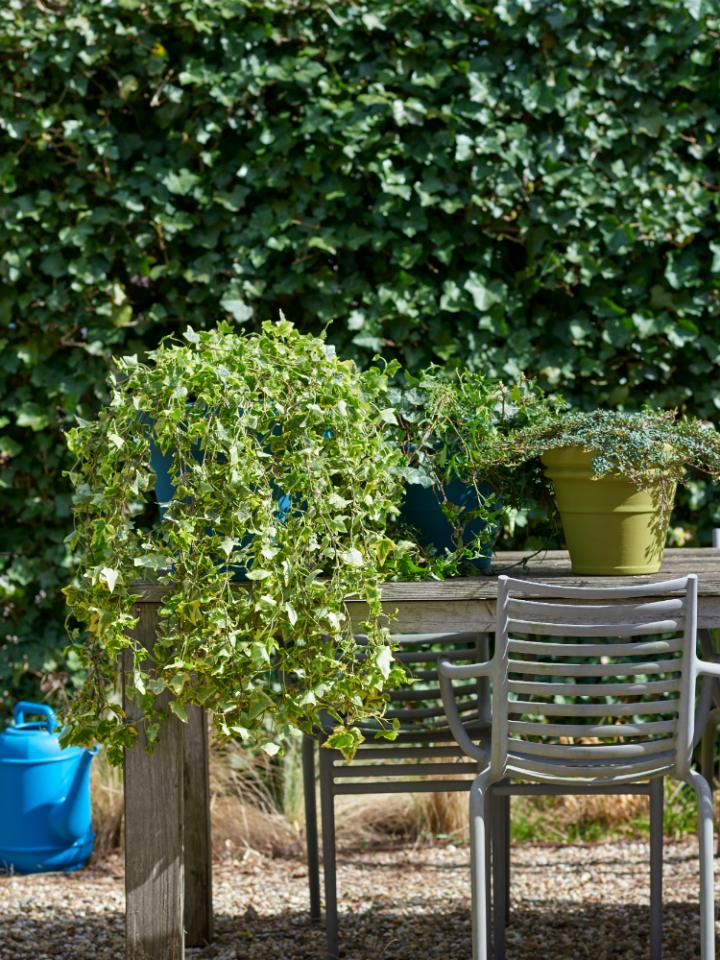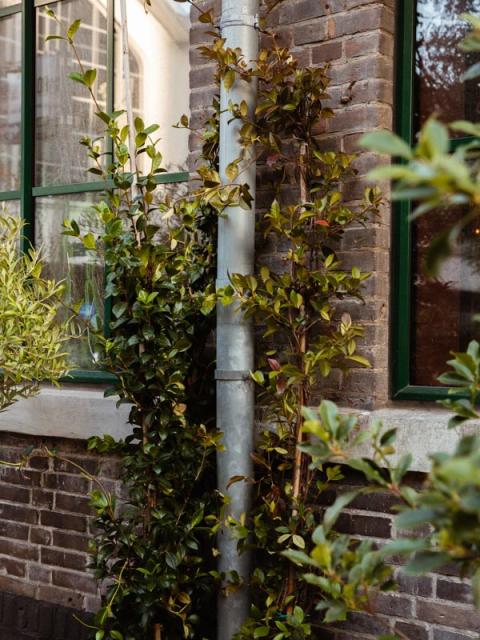It often occurs as groundcover in forests, and it can climb to a height of 25-30 metres. A young ivy plant won’t flower yet, but once it’s mature the plant produces yellow-green flowers that form black berries. The leaves also undergo a transformation in terms of shape from oval to diamond-shaped.
Origin
Ivy occurs throughout Europe in chalky woodlands, but also on the Canary Islands, in north Africa and Southwest Asia, where you can particularly find the plant in forests, along hedges, on rocks, walls, fences and ruins.
Trivia
-
Ivy makes an excellent windbreak, partition or insulation for a wall. But be careful: houses with old, porous walls can suffer considerable damage from the clinging roots.
-
Hedera is also used in cosmetics: it soothes sunburn and counters cellulitis.
-
Are you a bird lover? Birds like to build nests in your ivy.
-
Because the plant is evergreen, ivy symbolises eternal life. The clinging roots mean the plant also represents fidelity and tenacity. At the ancient Olympic Games the winners were given an ivy wreath because ivy also symbolises victory and masculine strength. So it’s a plant packed with symbolism!





















